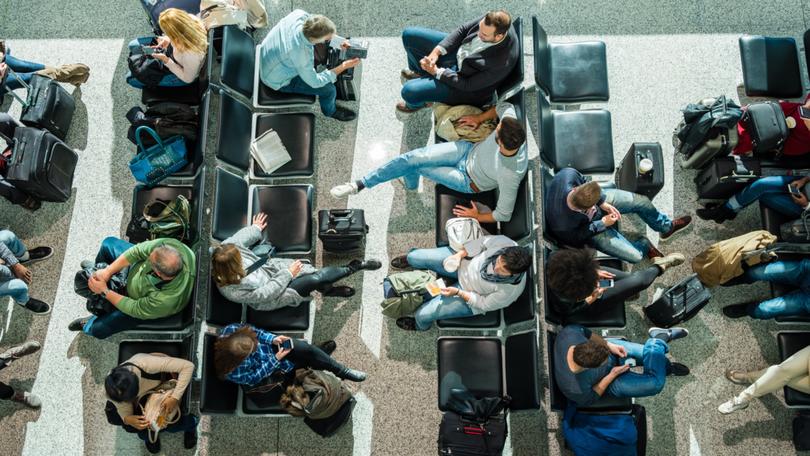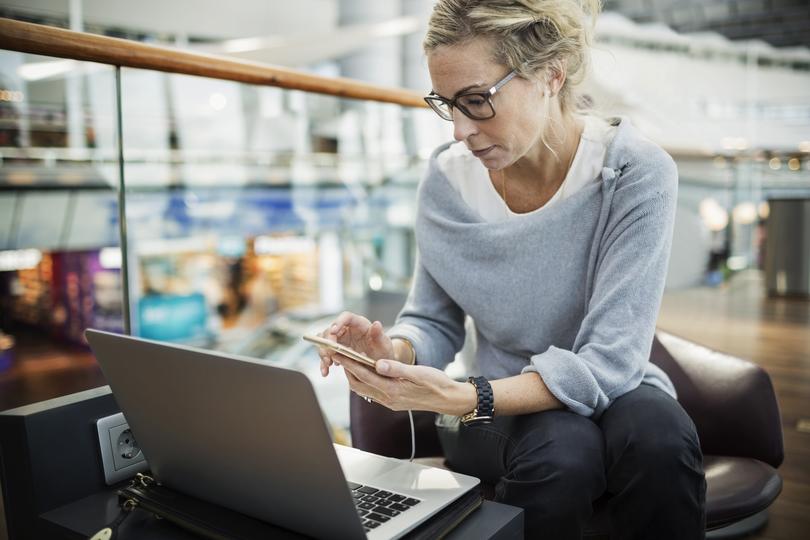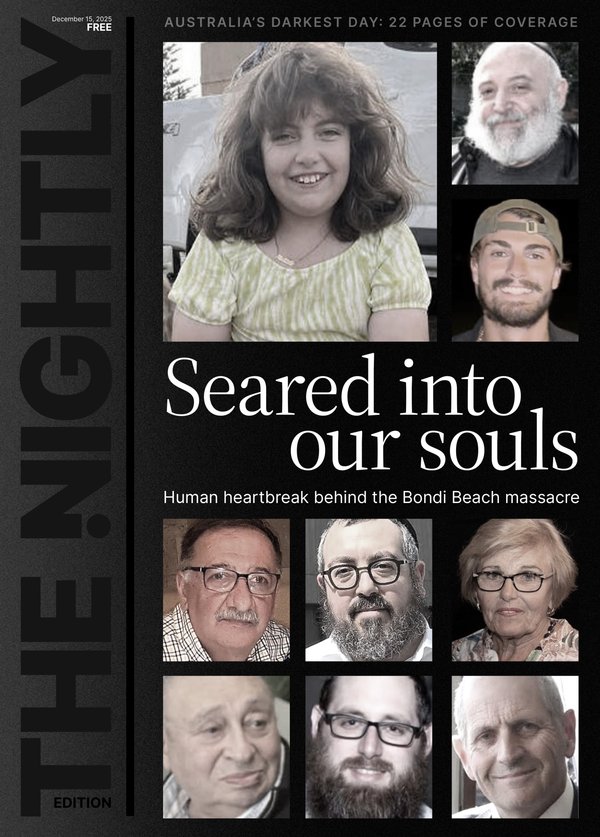Is it safe to use free wifi in an airport? Experts say no

Over the years, travellers have repeatedly been warned to avoid public wifi in places like airports and coffee shops.
Airport wifi, in particular, is known to be a hacker honeypot, due to what is typically relatively lax security.
But even though many people know they should stay away from free wifi, it proves as irresistible to travellers as it is to hackers, who are now updating an old cybercrime tactic to take advantage.
Sign up to The Nightly's newsletters.
Get the first look at the digital newspaper, curated daily stories and breaking headlines delivered to your inbox.
By continuing you agree to our Terms and Privacy Policy.An arrest in Australia in June set off alarm bells in the United States that cybercriminals are finding new ways to profit from what are called “evil twin” attacks.
Also classified within a type of cybercrime called “Man in the Middle” attacks, evil twinning occurs when a hacker or hacking group sets up a fake wifi network, most often in public settings where many users can be expected to connect.
In this instance, an Australian man was charged with conducting a wifi attack on domestic flights and airports in Perth, Melbourne, and Adelaide. He allegedly set up a fake wifi network to steal email or social media credentials.
“As the general population becomes more accustomed to free wifi everywhere, you can expect evil twinning attacks to become more common,” said Matt Radolec, vice president of incident response and cloud operations at data security firm Varonis, adding that no one reads the terms and conditions or checks the URLs on free wifi.
“It’s almost a game to see how fast you can click ‘accept’ and then ‘sign in’ or ‘connect.’ This is the ploy, especially when visiting a new location; a user might not even know what a legitimate site should look like when presented with a fake site,” Radolec said.
Today’s ‘evil twins’ can more easily hide
One of the dangers of today’s twinning attacks is that the technology is much easier to disguise.
An evil twin can be a tiny device and can be tucked behind a display in a coffee shop, and the small device can have a significant impact.
“A device like this can serve up a compelling copy of a valid login page, which could invite unwary device users to enter their username and password, which would then be collected for future exploitation,” said Cincinnati-based IT consultant Brian Alcorn.
The site doesn’t even have to actually log you in. “Once you’ve entered your information, the deed is done,” Mr Alcorn said, adding that a harried, weary traveller probably would just think the airport wifi is having issues and not give it another thought.
People who are not careful with passwords, such as use of pet’s names or favourite sports teams as their password for everything, are even more vulnerable to an evil twin attack.
Alcorn says for individuals who reuse username and password combinations online, once the credentials are obtained they can be fed into AI, where its power can quickly give cybercriminals the key.
“You are susceptible to exploitation by someone with less than $500 in equipment and less skill than you might imagine,” Mr Alcorn said.
“The attacker just has to be motivated with basic IT skills.”

How to avoid becoming a victim of this cybercrime
When in public places, experts say it’s best to use alternatives to public wifi networks.
“My favourite way to avoid evil twin attacks is to use your phone’s mobile hotspot if possible,” said Brian Callahan, Director of the Rensselaer Cybersecurity Collaboratory at Rensselaer Polytechnic Institute.
Users would be able to spot an attack if through a phone relying on its mobile data and sharing it via a mobile hotspot.
“You will know the name of that network since you made it, and you can put a strong password that only you know on it to connect,” Callahan said.
If a hotspot isn’t an option, a VPN can also provide some protection, Callahan said, as traffic should be encrypted to and from the VPN.
“So even if someone else can see the data, they can’t do anything about it,” he said.
Airport and airline internet security issues
At many airports, the responsibility for wifi is outsourced and the airport itself has little if any involvement in safeguarding it. At Dallas Fort Worth International Airport, for example, Boingo is the wifi provider.
“The airport’s IT team does not have access to their systems, nor can we see usage and dashboards,” said an airport spokesman.
“The network is isolated from DAL’s systems as it is a separate stand-alone system with no direct connection to any of the City of Dallas’ networks or systems internally.”
A spokeswoman for Boingo, which provides service to approximately 60 airports in North America, said it can identify rogue wifi access points through its network management.
“The best way passengers can be protected is by using Passpoint, which uses encryption to automatically connect users to authenticated wifi for a safe online experience,” she said, adding that Boingo has offered Passpoint since 2012 to enhance wifi security and eliminate the risk of connecting to malicious hotspots.
Alcorn says evil twin attacks are “definitely” occurring with regularity in the United States, it’s just rare for someone to get caught because they are such stealth attacks. And sometimes hackers use these attacks as a learning model.
“Many evil twin attacks may be experimental by individuals with novice-to-intermediate skills just to see if they can do it and get away with it, even if they don’t use the collected information right away,” he said.
The surprise in Australia wasn’t the evil twinning attack itself, but the arrest.
“This incident isn’t unique, but it is unusual that the suspect was arrested,” said Aaron Walton, threat analyst at Expel, a managed services security company.
“Generally, airlines are not equipped and prepared to handle or mediate hacking accusations. The typical lack of arrests and punitive action should motivate travellers to exercise caution with their own data, knowing what a tempting and usually unguarded -target it is — especially at the airport.”
In the Australian case, according to AFP, dozens of people had their credentials stolen.
According to a press release from the AFP, “When people tried to connect their devices to the free wifi networks, they were taken to a fake webpage requiring them to sign in using their email or social media logins. Those details were then allegedly saved to the man’s devices.”
Once those credentials were harvested, they could be used to extract more information from the victims, including bank account information.
For hackers to be successful, they don’t have to dupe everyone. If they can persuade only a handful of people – statistically easy to do when thousands of harried and hurried people are milling around an airport – they will succeed.
“We expect wifi to be everywhere. When you go to a hotel, or an airport, or a coffee shop, or even just out and about, we expect there to be wifi and often freely available wifi,” Callahan said.
“After all, what’s yet another network name in the long list when you’re at an airport? An attacker doesn’t need everyone to connect to their evil twin, only some people who go on to put credentials into websites that can be stolen.”
The next time you’re at the airport, the only way to be 100 per cent sure you’re safe is to bring your own wifi.
